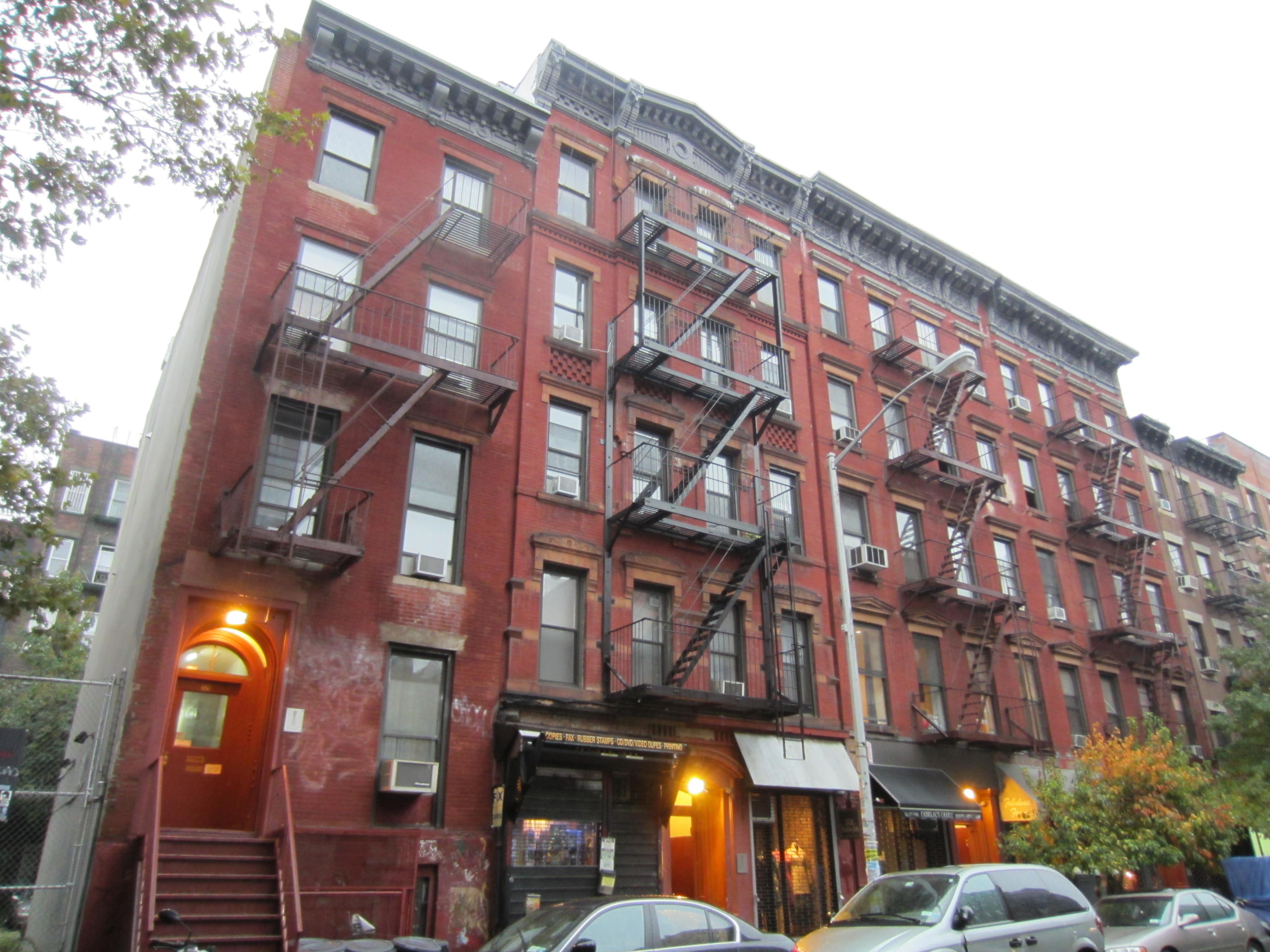
BSA approved rooftop additions for 329 to 335 East 9th Street in the East Village. Credit: CityLand.
Department of Buildings denied developer permits because plans did not comply with Multiple Dwelling law and community opposed out-of-character building enlargements. In March 2011, Terrence Lowenberg applied for alteration permits to build one-story additions on four pre-1929 apartment buildings at 329 to 335 East 9th Street in the East Village of Manhattan. Lowenberg planned to enlarge 331, 333, and 335 East 9th Street from five stories to six stories, reaching a height of 67 feet, three inches. 329 East 9th Street is planned to go from four stories to five stories and reach a height of 61 feet. The Department of Buildings denied the permits because while the plans complied with the area’s R8B zoning district regulations, they did not comply with certain aspects of the Multiple Dwelling law. The Multiple Dwelling law requires buildings exceeding 60 feet or six stories to provide an elevator and satisfy certain fire safety measures, such as fireproofing hallways and doors. Lowenberg appealed Buildings’ denial to the Board of Standards & Appeals seeking to vary the Multiple Dwelling law’s requirements.
At BSA, Lowenberg argued that complying with the Multiple Dwelling law would be impractical and create an unnecessary hardship. Lowenberg claimed that installing elevators and fire safety measures like enclosed stairwells would necessitate significant alterations to each building and encroach on the existing apartments. He also submitted a cost analysis indicating that a complying plan would increase construction costs from $1.5 million to $5 million. Further, Lowenberg claimed that the development plan’s alternative fire safety measures, including sprinklers, hard-wired smoke detectors, and new fire escapes, would provide significant safety improvements in lieu of the Multiple Dwelling law’s requirements.
Lowenberg’s development plan was opposed by Manhattan Community Board 3, Council Member Rosie Mendez, New York State Senator Tom Duane, New York State Assembly Member Brian Kavanagh, the East Village Community Coalition, and the Greenwich Village Society for Historic Preservation. The opposition claimed that Lowenberg’s hardship was self-created because he decided to enlarge the buildings. The opposition also argued that the plan would not comply with the Zoning Resolution because each building would violate the Sliver law (ZR § 23-692), which limits the height of certain buildings with street wall widths less than 45 feet, and included window dormers that were too wide under ZR § 23-621. Further, the opposition maintained that the plan would have a negative impact on the neighborhood’s low-rise character and encourage other owners to enlarge their buildings.
BSA granted the appeal and agreed to vary the Multiple Dwelling law’s requirements. BSA found that Lowenberg had established a sufficient level of hardship and that the plan’s alternative fire safety measures would promote the Multiple Dwelling law’s public safety purpose. In response to the opposition, BSA concluded that the Sliver law did not apply because all four buildings shared one zoning lot and were not considered four separate interior lots for the purposes of the Sliver law. BSA also pointed out that Lowenberg revised his plan to conform to the Zoning Resolution’s dormer specifications. Responding to the opposition’s concern about the plan’s impact on the neighborhood, BSA explained that unlike variance applications under the Zoning Resolution, the scope of its review for Multiple Dwelling law cases is limited to an applicant’s compliance with the law.
BSA: 331 East 9th Street, Manhattan (80-11-A) (September 11, 2012); 333 East 9th Street, Manhattan (84-11-A) (September 11, 2012); 335 East 9th Street, Manhattan (85-11-A) (September 11, 2012); 329 East 9th Street, Manhattan (103-11-A) (September 11, 2012) (Marvin B. Mitzner, for Terrence Lowenberg).

